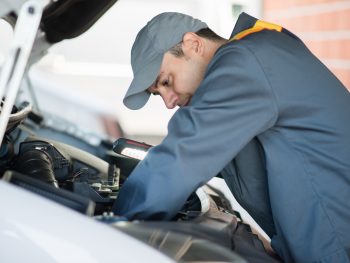Nearly one in 10 MOT fails down to most serious defects, RAC warns
Almost one in 10 MOT tests result in a fail from at least one dangerous defect, showing the need for routine checks to keep cars and vans safe.

The most serious MOT failures accounted for 8% of tests, equivalent to 2.4 million vehicles, for the 12 months to March 2022
While a third of all initial MOT tests of cars, vans and small passenger vehicles are not passed, DVSA data analysed by the RAC shows that the most serious cases accounted for 8% of tests, equivalent to 2.4 million vehicles, for the 12 months to March 2022.
Brakes and tyres overwhelmingly cause the highest share of such dangerous defect MOT failures, accounting for 88%, according to the analysis. Although the biggest causes of MOT failures have remained consistent over many years, the proportion of tyre failures has increased slightly from 10% in 2018/19 to 12% in 2021/22.
Lamps, reflectors and indicators continue to be the most frequent reasons for vehicles failing their MOT, accounting for just over a quarter (25.5%), while faulty or broken suspensions represented just under a fifth (18.3%) of all failures. Problems with brakes (17%) and tyres (12%) were the third and fourth biggest reasons for an MOT failure, with bad visibility – likely cracks on windscreens – rounding up the top five, representing just 8.7% of all MOT failures.
The RAC added that the data shows the need for regular MOT testing. A current government consultation explores possible plans to move the date of the first MOT from three years to four years and switch the annual MOT to every two years. More than half of drivers (55%) thought the latter was a bad idea according to a survey of the RAC Opinion Panel last autumn.
Head of roads policy Nicholas Lyes commented: “With more than 7.3 million small passenger vehicles initially failing their MOTs, and alarmingly around 2.4m of these failures having at least one dangerous defect, the idea of relaxing rules on MOT tests could very well result in making our roads far more dangerous with the number of unroadworthy vehicles increasing. We hope the Government has finally consigned such an idea to the bin.”
Lyes also stressed the importance of drivers keeping on top of vehicle maintenance to avoid falling into the false economy trap where they pay much more later for repairs.
He commented: “Drivers should never ignore dashboard warning lights as they could end up putting themselves or others at risk and costing themselves a lot of money with a bigger repair bill than necessary, had they acted straightaway. Additionally, routine servicing helps reduce the chance of a vehicle failing its MOT as it includes a host of important basic checks.
“It’s also advisable to have someone check rear lights and indicators are working if the vehicle does not have modern dashboard warning lights. Keeping tyres properly inflated and having a smooth driving style will often help prolong the life of the rubber. And if something doesn’t sound or feel right, to get checked at a trusted garage as soon as possible.”












